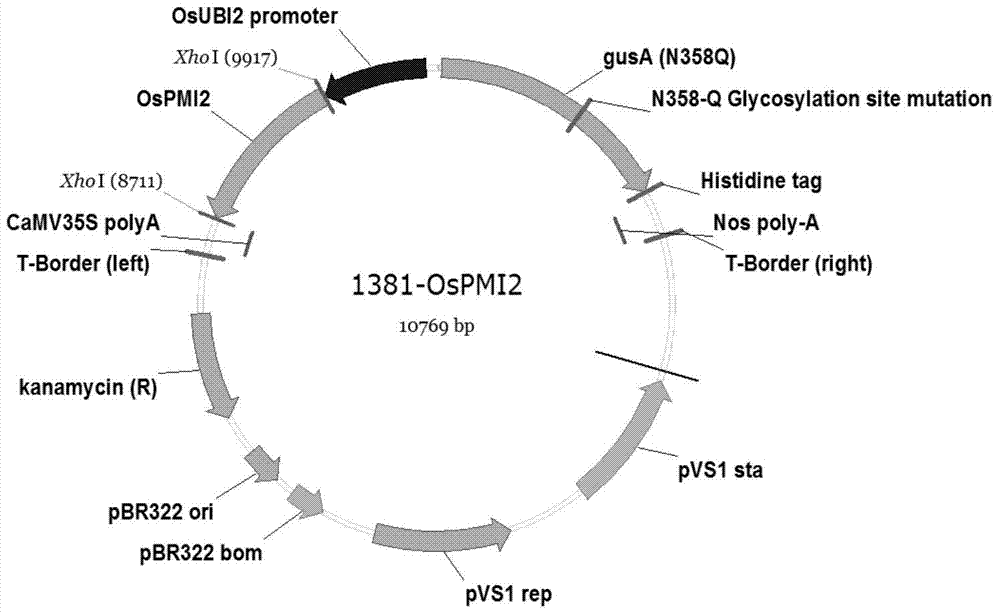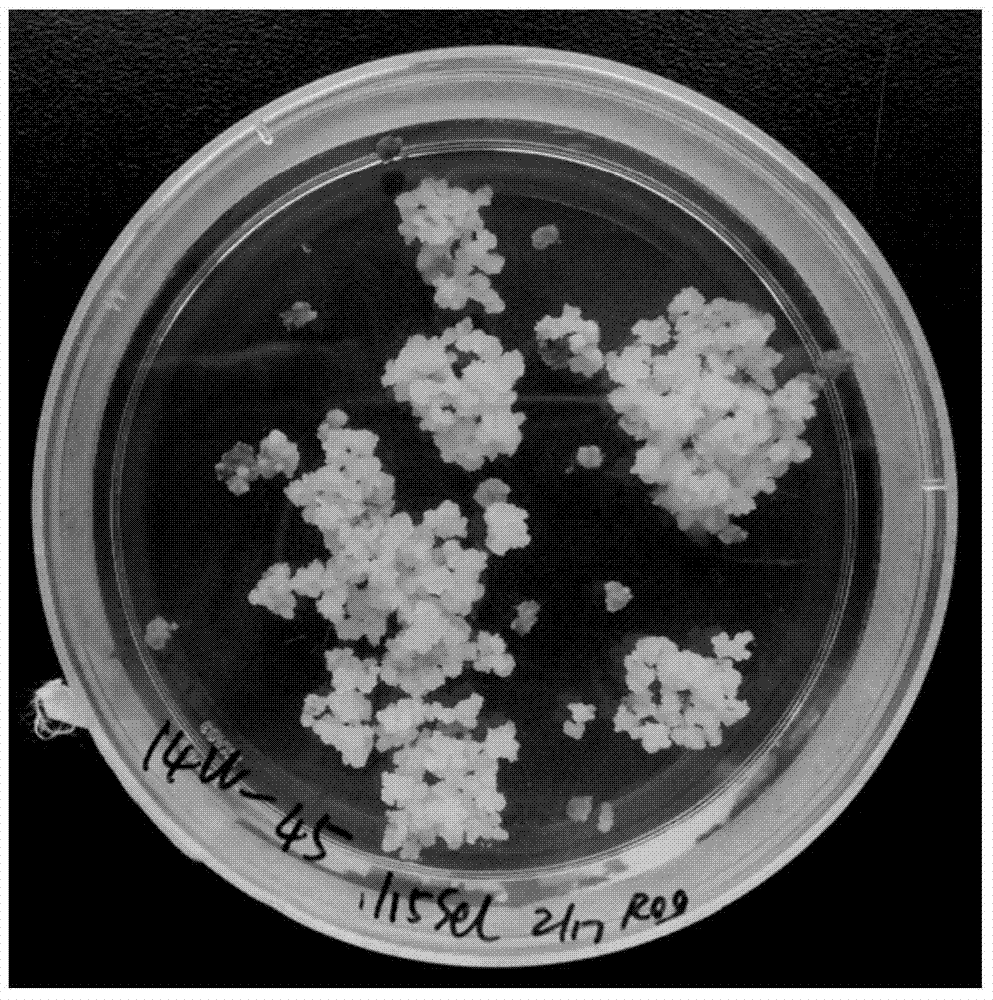Phosphate mannose isomerase (PMI) gene OsPMI2 originating from oryza sativa and application thereof
A technology of mannose phosphate and isomerase, which is applied in the field of biotechnology and plant genetic engineering, can solve problems such as safety concerns, insufficient attention to PMI safety, adverse effects of transformed receptor genomes, etc., to eliminate doubts, The effect of reducing potential security risks and addressing potential threats
- Summary
- Abstract
- Description
- Claims
- Application Information
AI Technical Summary
Problems solved by technology
Method used
Image
Examples
Embodiment 1
[0043] Embodiment 1——OsPMI2 gene acquisition and cloning
[0044] The sequence is obtained in rice based on the PMI protein sequence of Escherichia coli. The present invention extracts the RNA corresponding to the sequence of the present invention in rice (Oryza sativa), and reverse transcribes it into cDNA; according to the CDS (coding sequence, coding sequence) sequence of OsPMI2, design gene-specific cloning primers, forward primer 5' -ATGGAGGACCCGCCGCCGCCGC-3', reverse primer 5'-TTAACTGAAGAATCTGCTGTTT-3'; then use cDNA as a template for PCR amplification.
[0045] Recover the target fragment amplified by PCR, the target fragment length is 1200bp, connect it to PGEM-T-Easy carrier (purchased from Promega Company, operate according to the instruction manual of the carrier), transform Escherichia coli XL-Blue competent cells according to the heat shock method; Then, positive clones were obtained by colony PCR screening. The identified positive clones were submitted to Invit...
Embodiment 2
[0047] Embodiment 2——The construction of the prokaryotic expression vector of OsPMI2 gene
[0048] By designing OsPMI2 prokaryotic expression primers, the forward primer 5'- CTCGAG ATGGAGGACCCGCCGCCGCCGC-3' (XhoI restriction site is underlined), reverse primer 5'- CTCGAG TTAACTGAAGAATCTGCTGTTT-3' (the underline is the XhoI restriction site), using the PGEM-T-OsPMI2 recombinant plasmid as a template, carry out PCR amplification, reclaim the target fragment of PCR amplification and the pGEX-6P-1 expression vector ( (purchased from GE Company) was connected to obtain the prokaryotic expression vector pGEX-OsPMI2 fused with the GST (glutathione-S-transferase) fragment, and transformed into Escherichia coli expression strain BL21.
Embodiment 3
[0049] Embodiment 3——OsPMI2 enzyme activity analysis
[0050] Line the BL21 strain containing the prokaryotic expression vector pGEX-OsPMI2, pick a single clone and inoculate it in 3 mL of ampicillin-containing LB liquid medium (see Table 1 for the Agrobacterium culture medium without agar), and culture overnight at 37°C with shaking ( 200r / min). The next day at room temperature, centrifuge at 5000r / min for 5min, discard the supernatant, resuspend the pellet with 3mL of fresh LB liquid medium, inoculate it in LB liquid medium containing ampicillin at a ratio of 1:100, culture with shaking at 37°C for 3h (200r / min), until OD600 (Optical density 600nm, 600nm absorbance value) reaches 0.6-1.0, add IPTG (isopropyl thiogalactoside, isopropyl thiogalactoside) to a final concentration of 1mM, and continue shaking culture at 37°C for 6h (200r / min).
[0051] 250mL culture with 80mL Bind / Wash Buffer (composition is 43mM Na 2 HPO 4 , 14.7mM KH 2 PO 4 , 1.37M NaCl, 27mM KCl, pH7.3...
PUM
 Login to View More
Login to View More Abstract
Description
Claims
Application Information
 Login to View More
Login to View More - R&D
- Intellectual Property
- Life Sciences
- Materials
- Tech Scout
- Unparalleled Data Quality
- Higher Quality Content
- 60% Fewer Hallucinations
Browse by: Latest US Patents, China's latest patents, Technical Efficacy Thesaurus, Application Domain, Technology Topic, Popular Technical Reports.
© 2025 PatSnap. All rights reserved.Legal|Privacy policy|Modern Slavery Act Transparency Statement|Sitemap|About US| Contact US: help@patsnap.com



